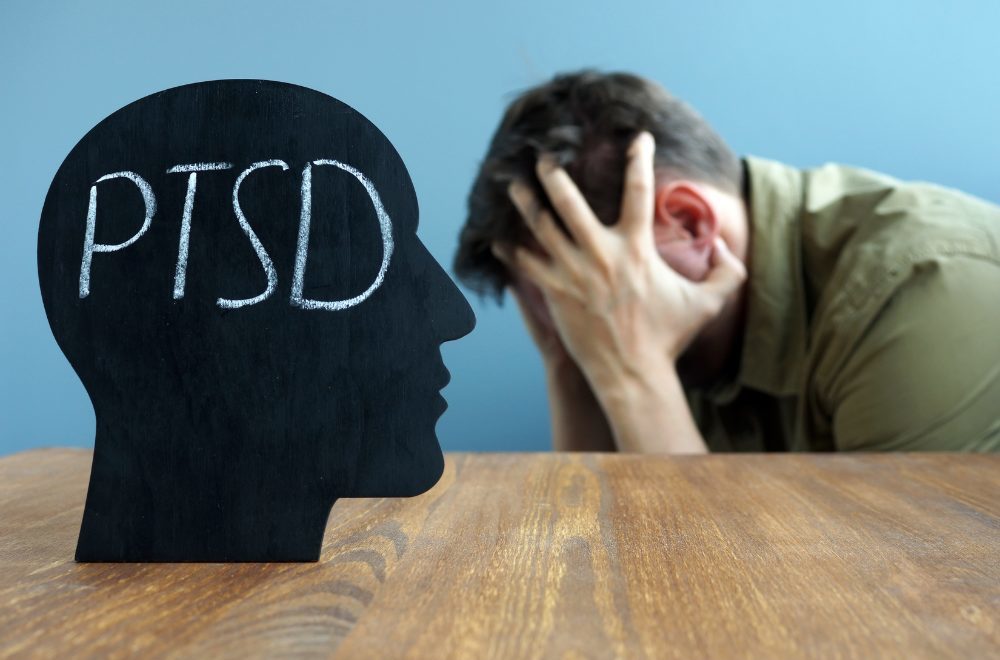
I. Introduction
As a psychiatric provider, I see firsthand the impact mental health conditions can have on people’s lives. Today, I want to talk about a specific condition: Post-Traumatic Stress Disorder, or PTSD. PTSD is more than just a memory of a bad experience. It’s a complex mental health condition that can develop after being exposed to a terrifying event. These events can be anything from a car accident or a natural disaster to a violent crime or military combat. They can also be related to childhood abuse or neglect.
The experience itself can be so overwhelming that it disrupts your sense of safety and security in the world. It can leave you feeling constantly on edge, reliving the trauma in your thoughts and nightmares, and avoiding anything that reminds you of the event.
I understand how difficult it can be to live with PTSD. Many people live with this condition without even realizing it. That’s why I’m dedicating this blog to shedding light on PTSD. I’ll explore what it is, the different ways it manifests, and most importantly, how to find healing and move forward. Whether you’re struggling with PTSD yourself or looking to support someone who is, you’re not alone. This blog is here to offer information, understanding, and hope.
II. What is PTSD?
Post-Traumatic Stress Disorder, or PTSD, is a condition that can develop after experiencing or witnessing an event that you perceive as terrifying . The trauma itself is often so overwhelming that it disrupts your sense of safety and security in the world which can leave you feeling constantly on edge, your nervous system perpetually primed for fight or flight. You might experience intrusive thoughts and flashbacks, reliving the trauma in your mind and body as if it’s happening all over again. Nightmares can become a regular occurrence, further disrupting your sleep and leaving you feeling exhausted.
You might also find yourself avoiding anything that reminds you of the event, even places, people, or situations that feel remotely connected. This avoidance can significantly impact your daily life, limiting your ability to go to work, socialize with friends, or even drive the same route you used to take every day. The world can start to feel like a minefield, and you might feel constantly on guard to protect yourself from further harm.
III. Symptoms of PTSD
PTSD manifests in a variety of ways, and the experience can be unique to each individual. However, there are some core symptoms that are commonly seen in people with PTSD. I often see these symptoms grouped into three main categories:
● Intrusive Thoughts and Memories: These are unwanted and distressing thoughts, images, or sensory experiences that flood your mind and body commonly referred to as flashbacks. Flashbacks can leave you feeling overwhelmed and disoriented sometimes not realizing that the sensory experiences are related to the trauma. Nightmares can also be a common occurrence, reliving the trauma in your sleep and further disrupting your ability to rest.
● Avoidance Behaviors: As a way to cope with the overwhelming emotions and memories associated with the trauma, you might find yourself avoiding anything that reminds you of the event. This could involve avoiding places, people, conversations, or even sights, sounds, or smells that trigger memories. While avoidance can offer some temporary relief, it can also significantly restrict your life and prevent you from fully engaging in activities you once enjoyed.
● Negative Thoughts and Feelings: The trauma can leave you feeling emotionally numb, detached from others, constantly on edge and hypervigilant. You might struggle with feelings of guilt, shame, or anger related to the event. Negative beliefs about yourself and the world can also develop, making you feel hopeless or like you can’t trust anyone or anything. These negative thoughts and feelings can be incredibly draining and make it difficult to maintain healthy relationships and a positive outlook on life.
It’s important to remember that not everyone experiences all of these symptoms, and the severity can vary greatly from person to person. However, if you’re struggling with any of these symptoms for more than a few months and they’re interfering with your daily life, it’s important to seek professional help. In the next section, I’ll discuss the benefits of seeking help for PTSD and the treatment options available.
IV. Seeking PTSD Treatment
If you suspect you might be struggling with PTSD, you’re not alone. There are several compelling reasons to seek professional help for PTSD:
● Reduced Symptoms: Evidence-based treatments can significantly reduce the severity of PTSD symptoms, allowing you to manage intrusive thoughts, flashbacks, and emotional dysregulation more effectively.
● Improved Quality of Life: By addressing the core symptoms of PTSD, treatment can help you regain control of your life. This may involve returning to work or school, reconnecting with loved ones, and engaging in activities you once enjoyed but may have been avoiding.
● Develop Coping Skills: Therapy can equip you with valuable coping mechanisms to manage stress, anxiety, and negative emotions in a healthy way. These skills will empower you to navigate challenging situations and build resilience for the future.
● Break the Cycle: Left untreated, PTSD can worsen over time and lead to additional mental health problems such as depression, substance abuse, and relationship difficulties. Seeking professional help early can break this cycle and prevent further complications.
There are a variety of evidence-based PTSD Treatment options, some of which include:
● Cognitive Behavioral Therapy (CBT): This therapy helps you identify and challenge negative thoughts and beliefs associated with the trauma. By reframing these thoughts, you can develop a more positive outlook and reduce emotional distress.
● Eye Movement Desensitization and Reprocessing (EMDR): EMDR is a specialized therapy that can help you process traumatic memories in a safe and controlled environment. By using bilateral stimulation (such as eye movements), EMDR can reduce the intensity of emotional responses to the trauma.
● Brain-Spotting: Brainspotting focuses on identifying “brainspots” – specific eye positions linked to emotional responses – to access and process underlying trauma.
● Hypnosis: Hypnosis can reduce the negative emotions associated with the trauma and empower individuals to develop healthier coping mechanisms. Hypnosis as a valuable tool for managing PTSD symptoms, often used alongside other evidence-based therapies.
● Parts and Memory: This method sugests that our psyche is made up of various “parts,” each with its own role and emotions. In PTSD treatment, it focuses on identifying parts that hold onto traumatic memories and guides individuals to compassionately understand them.
● Medication Management: In some cases, medication is a helpful adjunct to therapy in managing symptoms like anxiety, depression, or insomnia that can often co-occur with PTSD.
V. Trust The Wellness Institute of Southern Nevada For PTSD Treatment
PTSD can result in a range of issues or be debilitating at times, but it’s important to remember that healing is possible. Don’t wait any longer to start your recovery. Contact The Wellness Institute of Southern Nevada and take back control of your life. Remember, with the right support and treatment, you can overcome PTSD and live a fulfilling life.
